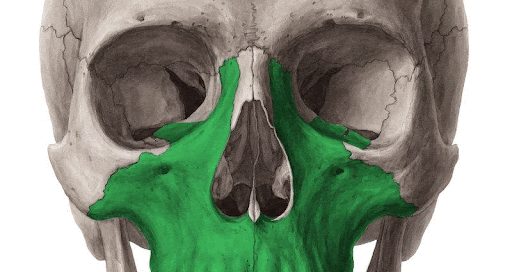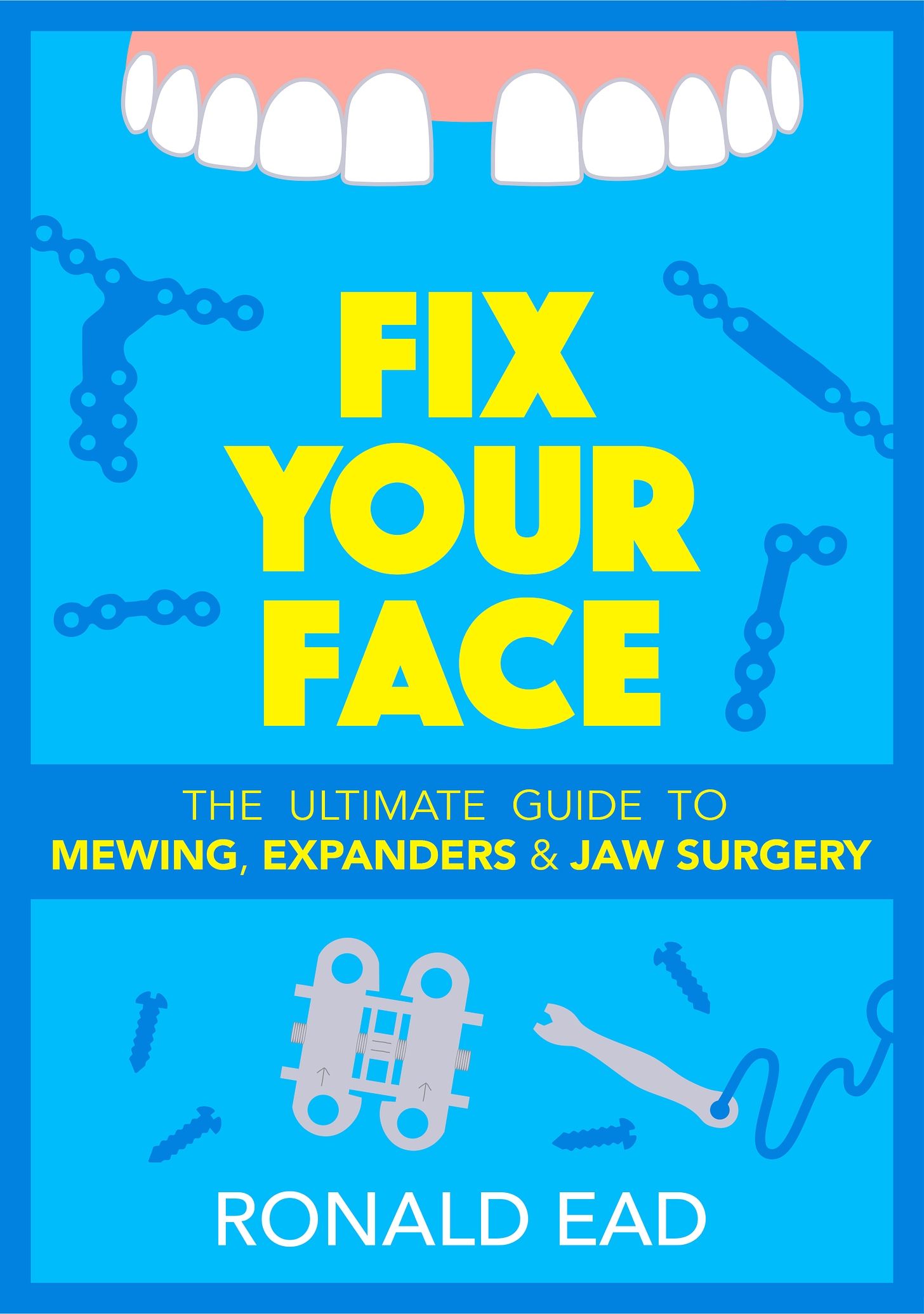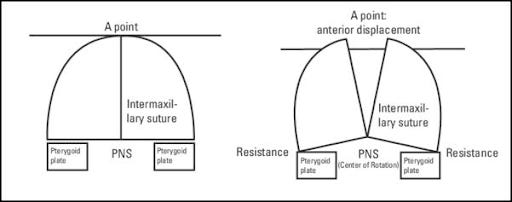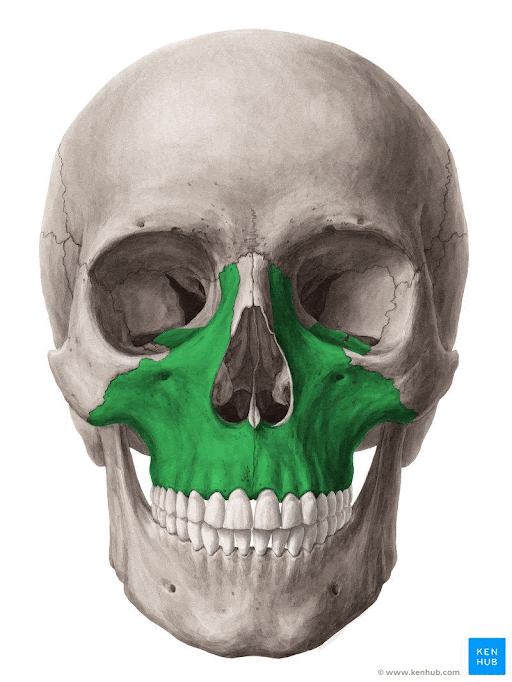This is Chapter 6.3 of the JawHacks ebook. See the full Table of Contents here.
MARPE “Drop Down” Effect Problems
MARPE Can Advance the Maxilla
It is common knowledge that MARPE usually (but not always) brings the maxilla forward 1-2mm, even without a protraction device.

MARPE Can Drop the Maxilla Too
What is relatively less known is that MARPE can also cause the maxilla to drop, often significantly so.
This results in a gain of vertical dimension, or facial height.
Dr. Jeremy Manuele explains that the reason the palate can come forward and down during an expansion is because all of the structures holding the maxilla are up and back.
To quote Dr. Manuele, “The maxilla will move away from the areas of resistance. Once the midline suture splits, the remaining resistance is superior and [posterior] (frontomaxillary, nasomaxillary, zygomaxillary, pterygomaxillary) relative to where the force is being placed so you will see downward and forward movement of the maxillary complex.” (Source)
This tendency of the maxilla to drop is why Dr. Won Moon designed the MSE to be placed as superiorly (high up) in the palate as possible. The more flush to the palate the expander is, the less the “drop down” effect.
How Much is the Maxilla Actually Dropping?
According to Shuikai, the vertical gain often seems to be about half of the total expansion, which is significant.
In other words, in a larger expansion of, say, 10mm, there could be as much as 5mm of vertical gain, which is huge.
The below diagram illustrates the amount of vertical change relative to transverse expansion with MARPE.
The actual vector of expansion (the real direction of the skeletal motion) seems to be about 45 degrees downward, which certainly could vary depending on device design and resistance forces (like the ones Dr. Manuele mentioned), i.e. where the device is placed, as well as the age of the patient.
So, if the amount of turns sums to 1.5mm, then the downward vertical gain could be roughly 0.75mm under this ratio.
Now, the ratio of expansion to downward motion may not always be 2:1, but it certainly has the potential to be.
So providers and patients should proceed with utmost caution, especially considering the fallout that can occur with vertical gain which we will discuss below.
Recognizing the Vertical Dimension
Many people are good at identifying a narrow or recessed face, but are more vague on what constitutes a tall or short face.
To best understand the vertical dimension think of a gummy smile which is an indicator of excess facial height. A gummy smile develops when the maxilla and midface melt downward due to lack of tongue support starting in infancy.










